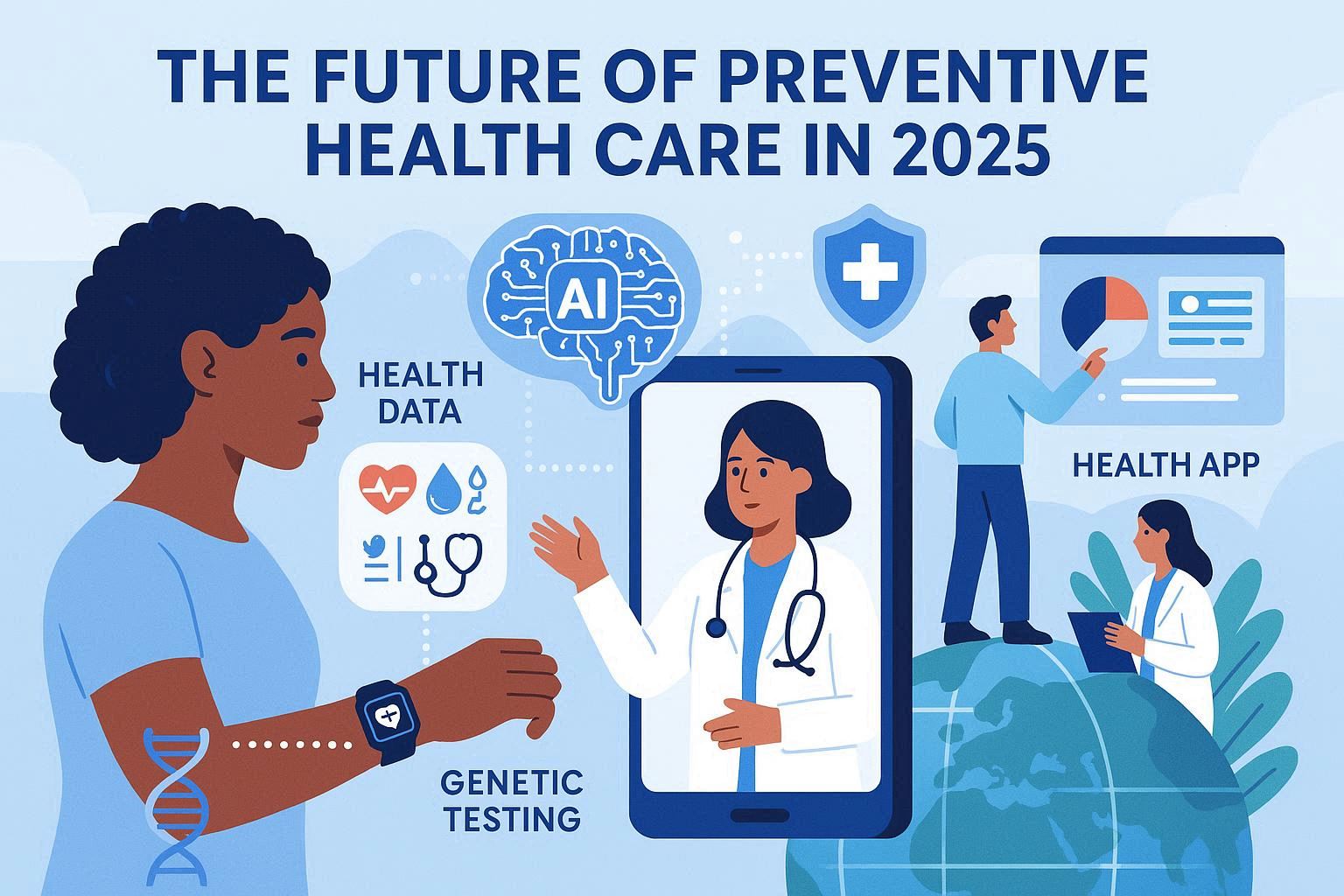For decades, healthcare systems around the world have focused primarily on treating illness after it occurs. However, in 2025, the focus is shifting toward prevention—helping people avoid disease before it begins. Preventive healthcare emphasizes lifestyle changes, early detection, and proactive monitoring, aiming to reduce the burden of chronic conditions and improve quality of life. As medical costs rise, prevention is becoming more important than cure.
This article explores the role of preventive healthcare in 2025, its benefits, challenges, and how individuals and communities can take charge of their health before problems develop.
1. What Is Preventive Healthcare?
Preventive healthcare includes all measures taken to prevent illness rather than treat it. It focuses on maintaining wellness through lifestyle improvements, screenings, vaccinations, and regular check-ups. The goal is to detect potential risks early and stop diseases before they become serious.
2. The Growing Importance of Prevention
With rising healthcare costs and an increase in lifestyle-related illnesses, prevention is now a global priority. Chronic diseases like diabetes, heart disease, and obesity are largely preventable through healthier habits. By addressing root causes early, preventive healthcare reduces strain on hospitals and lowers long-term expenses for individuals and governments.
3. Key Areas of Preventive Healthcare
- Lifestyle Choices – Healthy eating, regular exercise, and adequate sleep form the foundation of prevention.
- Vaccinations – Protect communities from infectious diseases and reduce outbreaks.
- Screenings – Early detection of issues like high blood pressure, cholesterol, or cancer can save lives.
- Mental Health – Stress management and emotional well-being are now recognized as essential parts of prevention.
4. The Role of Technology in Preventive Healthcare
Technology is transforming prevention in 2025. Wearables and mobile apps track heart rate, sleep, and physical activity, alerting users to unhealthy patterns. Artificial intelligence analyzes medical data to predict risks before symptoms appear. Telemedicine allows remote check-ups, making preventive care more accessible. These innovations empower individuals to monitor their health daily and take action when needed.
5. Personalized Preventive Care
Instead of a one-size-fits-all model, healthcare is becoming more personalized. Genetic testing, health data analysis, and lifestyle tracking enable doctors to create customized prevention plans. For example, someone with a family history of heart disease can receive specific diet and exercise recommendations tailored to their risks. This approach improves outcomes and ensures resources are used effectively.
6. Preventive Healthcare in Communities
Prevention is not only an individual responsibility—it is also a community effort. Governments and organizations are investing in:
- Public health campaigns promoting exercise and nutrition.
- School programs that encourage healthy habits from an early age.
- Accessible vaccination drives and free screenings.
- Policies that reduce exposure to harmful substances like tobacco and pollution.
Stronger community-based initiatives ensure that preventive care reaches everyone, regardless of income or location.
7. Barriers to Preventive Healthcare
Despite its benefits, preventive healthcare faces several challenges:
- Lack of awareness about the importance of prevention.
- Financial barriers for those without access to affordable care.
- Cultural attitudes that prioritize treatment over prevention.
- Inconsistent government policies or limited resources in some regions.
Addressing these barriers requires education, accessible healthcare infrastructure, and collaboration between governments, medical providers, and communities.
8. The Link Between Prevention and Longevity
Research consistently shows that preventive practices add years to life expectancy. Simple habits like regular physical activity, balanced nutrition, not smoking, and maintaining a healthy weight reduce the risk of premature death significantly. Preventive screenings and vaccinations also play a vital role in extending both lifespan and quality of life.
9. Future Trends in Preventive Healthcare
Looking ahead, preventive healthcare will continue to evolve with the help of science and technology. Emerging trends include:
- AI-Driven Health Predictions – Machine learning tools will predict disease risks more accurately.
- Digital Health Records – Seamless sharing of health data for better prevention strategies.
- Global Preventive Programs – International efforts to fight obesity, pollution, and infectious diseases.
- Integration of Mental and Physical Health – A holistic approach recognizing the mind-body connection.
10. Why Prevention Matters More Than Ever
As populations age and healthcare costs rise, prevention provides a sustainable solution. Every dollar spent on preventive healthcare saves multiple dollars in future treatments. More importantly, it reduces suffering and improves daily life for millions of people.
Conclusion
Preventive healthcare in 2025 represents a shift toward smarter, healthier living. By focusing on lifestyle choices, early detection, and innovative technology, individuals and communities can reduce illness and increase longevity. While challenges remain, the future of healthcare is clear: prevention is no longer optional—it is the foundation of a healthier, more sustainable world.

